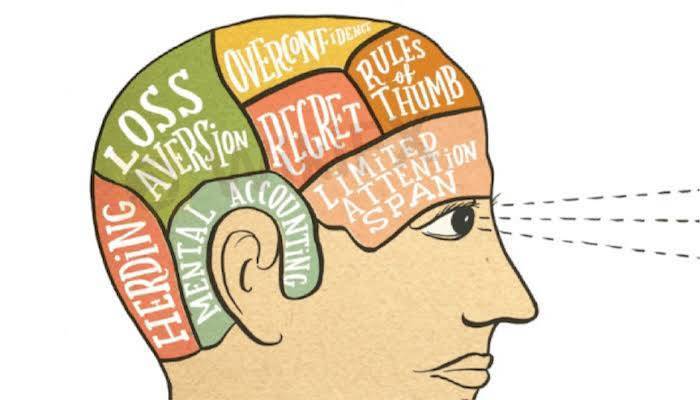
2025-02-12 17:57
IndustryBehavioral Economics: Understanding Consumer Choic
#firstdealofthenewyearastylz
Behavioral economics combines insights from psychology and economics to explore how individuals make decisions—often deviating from the purely rational behavior assumed by traditional economic models. It helps explain why consumers sometimes make seemingly irrational choices, how they react to incentives, and how cognitive biases influence their decisions.
Key Concepts in Behavioral Economics
Bounded Rationality
Consumers have limited cognitive resources, leading them to make decisions that are "good enough" rather than optimal.
Example: A shopper may pick a brand they recognize instead of comparing all available options.
Loss Aversion (Prospect Theory)
People tend to feel the pain of losses more intensely than the pleasure of equivalent gains.
Example: A consumer may avoid switching phone plans even if a new one offers savings, fearing potential downsides.
Anchoring Effect
Initial information (the "anchor") influences subsequent decisions, even if the anchor is irrelevant.
Example: If a product is first displayed at a high price, then marked as "50% off," consumers perceive it as a better deal.
Choice Overload (Paradox of Choice)
Too many options can lead to decision paralysis and dissatisfaction.
Example: A restaurant with a smaller menu may make customers feel more confident in their choice than one with an overwhelming number of dishes.
Social Proof and Herd Behavior
People tend to follow others when making decisions, assuming the majority knows best.
Example: Online reviews and best-seller lists strongly influence consumer purchases.
Nudging
Small design changes in choices can lead to better decision-making without restricting options.
Example: Placing healthier food at eye level in supermarkets increases the likelihood of selection.
Mental Accounting
People treat money differently based on its source or intended use.
Example: Someone may be reluctant to dip into their "vacation savings" for an emergency, even if it makes financial sense.
Temporal Discounting
People prefer immediate rewards over larger future rewards.
Example: Consumers opt for "buy now, pay later" schemes rather than saving for a purchase.
Implications for Businesses and Policy
Marketing Strategies: Businesses use behavioral insights to design pricing, promotions, and product placements.
Public Policy: Governments implement nudges (e.g., automatic enrollment in retirement plans) to encourage better financial and health decisions.
Consumer Awareness: Understanding these biases helps individuals make more informed choices.
Like 0

Olywhtye
Broker
Hot content
Industry
Event-A comment a day,Keep rewards worthy up to$27
Industry
Nigeria Event Giveaway-Win₦5000 Mobilephone Credit
Industry
Nigeria Event Giveaway-Win ₦2500 MobilePhoneCredit
Industry
South Africa Event-Come&Win 240ZAR Phone Credit
Industry
Nigeria Event-Discuss Forex&Win2500NGN PhoneCredit
Industry
[Nigeria Event]Discuss&win 2500 Naira Phone Credit
Forum category

Platform

Exhibition

Agent

Recruitment

EA

Industry

Market

Index
Behavioral Economics: Understanding Consumer Choic
 Hong Kong | 2025-02-12 17:57
Hong Kong | 2025-02-12 17:57#firstdealofthenewyearastylz
Behavioral economics combines insights from psychology and economics to explore how individuals make decisions—often deviating from the purely rational behavior assumed by traditional economic models. It helps explain why consumers sometimes make seemingly irrational choices, how they react to incentives, and how cognitive biases influence their decisions.
Key Concepts in Behavioral Economics
Bounded Rationality
Consumers have limited cognitive resources, leading them to make decisions that are "good enough" rather than optimal.
Example: A shopper may pick a brand they recognize instead of comparing all available options.
Loss Aversion (Prospect Theory)
People tend to feel the pain of losses more intensely than the pleasure of equivalent gains.
Example: A consumer may avoid switching phone plans even if a new one offers savings, fearing potential downsides.
Anchoring Effect
Initial information (the "anchor") influences subsequent decisions, even if the anchor is irrelevant.
Example: If a product is first displayed at a high price, then marked as "50% off," consumers perceive it as a better deal.
Choice Overload (Paradox of Choice)
Too many options can lead to decision paralysis and dissatisfaction.
Example: A restaurant with a smaller menu may make customers feel more confident in their choice than one with an overwhelming number of dishes.
Social Proof and Herd Behavior
People tend to follow others when making decisions, assuming the majority knows best.
Example: Online reviews and best-seller lists strongly influence consumer purchases.
Nudging
Small design changes in choices can lead to better decision-making without restricting options.
Example: Placing healthier food at eye level in supermarkets increases the likelihood of selection.
Mental Accounting
People treat money differently based on its source or intended use.
Example: Someone may be reluctant to dip into their "vacation savings" for an emergency, even if it makes financial sense.
Temporal Discounting
People prefer immediate rewards over larger future rewards.
Example: Consumers opt for "buy now, pay later" schemes rather than saving for a purchase.
Implications for Businesses and Policy
Marketing Strategies: Businesses use behavioral insights to design pricing, promotions, and product placements.
Public Policy: Governments implement nudges (e.g., automatic enrollment in retirement plans) to encourage better financial and health decisions.
Consumer Awareness: Understanding these biases helps individuals make more informed choices.
Like 0
I want to comment, too
Submit
0Comments

There is no comment yet. Make the first one.

Submit
There is no comment yet. Make the first one.